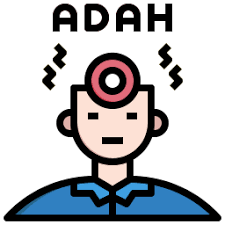
Understanding ADHD Medication: What You Need to Know
Attention-Deficit/Hyperactivity Disorder (ADHD) is a common neurodevelopmental disorder that affects both children and adults. Characterized by symptoms such as inattention, hyperactivity, and impulsivity, ADHD can significantly impact daily functioning and quality of life. Medication is one of the primary treatment options for managing ADHD symptoms. Understanding how these medications work, their benefits, potential side effects, and considerations is crucial for anyone affected by ADHD or involved in its treatment.
Types of ADHD Medications
ADHD medications are broadly categorized into stimulants and non-stimulants. Stimulants are the most commonly prescribed and are often considered first-line treatments. Non-stimulant medications are typically used when stimulants are ineffective or cause intolerable side effects.
1. Stimulants
Stimulant medications work by increasing the levels of certain neurotransmitters in the brain, primarily dopamine and norepinephrine. This helps improve focus, attention, and impulse control. Stimulants are available in two forms: short-acting and long-acting.
Short-Acting Stimulants: These medications typically last 4-6 hours and require multiple doses throughout the day. Examples include methylphenidate (Ritalin) and amphetamine salts (Adderall).
Long-Acting Stimulants: Designed to provide symptom relief for 8-12 hours, long-acting stimulants are often preferred for their convenience and consistent effect. Examples include extended-release methylphenidate (Concerta) and extended-release amphetamine salts (Adderall XR).
2. Non-Stimulants
Non-stimulant medications are used when stimulants are not suitable. They can be helpful in managing ADHD symptoms with potentially fewer side effects. The primary non-stimulant medications include:
Atomoxetine (Strattera): A selective norepinephrine reuptake inhibitor, atomoxetine increases norepinephrine levels in the brain. It is a non-stimulant option that may be preferred for individuals with a history of substance abuse or those who do not respond well to stimulants.
Guanfacine (Intuniv) and Clonidine (Kapvay): These medications are alpha-2 adrenergic agonists that work by affecting certain receptors in the brain. They are often used as adjunctive treatments or in cases where stimulants are not appropriate.
Benefits of ADHD Medications
ADHD medications can offer significant benefits. For many individuals, they help improve focus, reduce hyperactivity, and enhance impulse control. This can lead to better performance in academic, professional, and social settings. Medications can also improve overall quality of life by helping individuals manage their symptoms more effectively.
Potential Side Effects
While ADHD medications can be highly effective, they are not without potential side effects. Common side effects of stimulant medications include:
Insomnia: Difficulty falling or staying asleep is a frequent issue.
Appetite Loss: Reduced appetite can lead to weight loss.
Increased Heart Rate: Some individuals may experience a faster heart rate.
Mood Changes: Irritability or mood swings can occur.
Non-stimulant medications also have their side effects, such as:
Atomoxetine: Can cause drowsiness, stomach upset, and changes in mood.
Guanfacine and Clonidine: May lead to drowsiness, low blood pressure, and dry mouth.
It’s essential for individuals taking ADHD medication to work closely with their healthcare provider to monitor these side effects and adjust treatment as necessary.
Considerations and Management
Choosing the right ADHD medication involves a comprehensive evaluation by a healthcare provider. Factors such as the individual’s age, symptom profile, medical history, and any coexisting conditions are considered. It’s often a process of trial and adjustment to find the most effective medication with the fewest side effects.
Personalization: ADHD treatment is highly individualized. What works for one person may not work for another. Regular follow-ups with a healthcare provider are necessary to tailor the medication regimen to the individual’s needs.
Monitoring: Regular monitoring of medication effects is crucial. This includes tracking improvements in ADHD symptoms, monitoring for side effects, and adjusting dosages as needed.
Non-Medication Strategies: Medication is often most effective when combined with behavioral therapies and lifestyle changes. Strategies such as cognitive-behavioral therapy (CBT), organizational skills training, and behavioral interventions can complement medication and provide a more comprehensive approach to managing ADHD.
Conclusion
ADHD medication can be a powerful tool in managing symptoms and improving quality of life. Understanding the types of medications available, their benefits, potential side effects, and the importance of individualized treatment is essential for those affected by ADHD. With proper management and support, individuals with ADHD can lead fulfilling and productive lives. If you or someone you know is considering ADHD medication, consulting with a healthcare provider is a critical step in finding the most effective and appropriate treatment plan.





Leave Your Comment